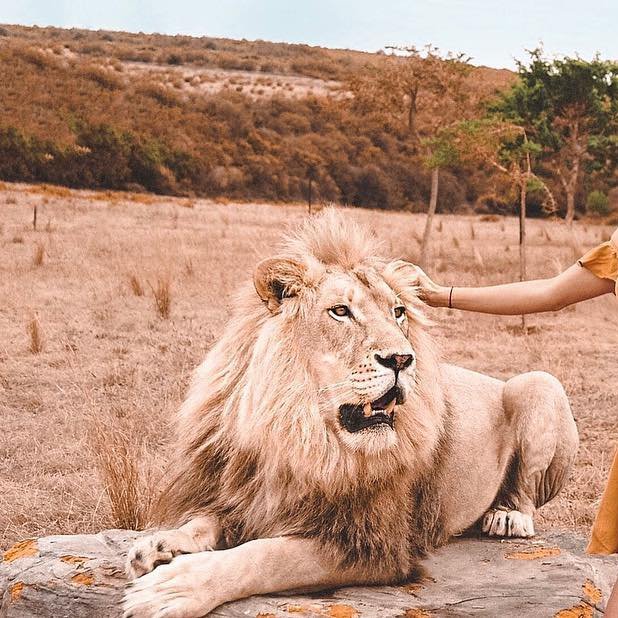You’ve all seen the magnificent wildlife photos that appear on the web and in magazines where the lion is just about to pounce and rip a zebra to pieces. They are great, but you don’t have to be a professional wildlife photographer to take decent wildlife photos. In fact, wildlife photography is mainly about instinct and that fuzzy feeling called instinct. If you feel that the time is right to push the button on the camera then just do it. You never know, you just might have a hidden natural talent! But, if you want some advice, read on for 8 Top Tips for Taking Wildlife Photos
Snapshot Survey
Thanks for sharing your thoughts!
Please subscribe for your personalized newsletter:
Successfully subscribed!
Thank you for subscribing! Check your inbox for personalized content.
1. The Gear
Have a thorough knowledge of your camera when taking wildlife photos. Great wildlife photography is made in just a few seconds. Budding photographers who are desperately flicking through the manual, are going to miss potentially once-in-a-lifetime moments.
2. The Camera
The right camera doesn’t necessarily have to be the most expensive one. Just remember that different cameras work best in different environments. In places where the animals are kept in captivity and they come up close, then any digital camera will work perfectly for you. Trying to catch a monkey swinging through the trees in the dark enclaves of a rainforest will be a little harder, though, so opt for a lens focal length of at least 300-400mm. 10x zoom should also be a given on any good holiday camera.
Snapshot Survey
Thanks for sharing your thoughts!
Please subscribe for your personalized newsletter:
Successfully subscribed!
Thank you for subscribing! Check your inbox for personalized content.
3. Light and Discreet
Animals don’t like tourists with lights, large cameras, and artificial scenery set up behind them. For good photos of wildlife you want to make sure that you are travelling light. Not only can large pieces of equipment scare animals away, but the chances are you won’t be getting the time to utilize them anyway as they just take so long to deploy.
4. Practice
Even the photographers who have fountains of natural talent will have had to refine it before they became experts at taking wildlife photos. Obviously, practicing whilst on holiday isn’t the best idea, so go down to the local zoo and practice with all the different settings on your chosen camera. Try low light, high light, and capturing multiple figures at the same time. All of these skills will serve you well.
5. Lenses
There are no lenses that fit every situation. Make sure that multiple lenses are taken on holiday to match a variety of different environments. A lens of 300-400mm is perfect for focusing on the more dangerous animals that will be situated far away from your shooting position. But to take successful photos of animals you have to make sure that you can switch to a 100mm lens quickly to get the best results when you come closer to some amazing creatures.
Gallery Spotlight
Save and share the images that inspire you. Tag @allwomenstalk to get featured.
Save
6. Habitat Considerations
Wildlife photography can be improved by how you include the habitat surrounding the subject. If you are taking a picture of a whale spraying water into the air then it would be a big sin to miss out that burning orange sunset just disappearing below the horizon, wouldn’t it? This is where your lenses will come into play again as you are going to need a wide angled lens to capture barren environments like the Kenyan Plains.
7. Starting Early
Animals tend to be out and about early in the morning. Generally, if you’re not up around sunrise then you are going to miss a lot of potentially sumptuous photos of wildlife. In fact, when you’re around in the middle of the day animals tend to be hiding or in sleep mode. The other good time where you can catch wild animals doing their thing is at night, but spectacular night time wildlife photography is potentially dangerous, so don’t attempt it unless you’re with a professional.
8. Focal Length Extensions
A worthy mention goes to focal length extensions. Simply add these to your arsenal and you can now zoom in roughly 1.6x further than before. Now you can see more without having to put yourself in danger by getting closer – a must for anybody who is serious about taking home some memorable holiday photos of wildlife.
Wildlife photos are always a major talking point when you come back from your adventures. If wildlife photography is not something that you’ve ever tried, then you are guaranteed to get a few duds. Practice, however, will undoubtedly provide you with some wildlife photos that really do deserve pride of place in your album.
Top Image Source: blog.joinsmsn.com
Snapshot Survey
Thanks for sharing your thoughts!
Please subscribe for your personalized newsletter:
Successfully subscribed!
Thank you for subscribing! Check your inbox for personalized content.
Comments

EST 2005
Evolve. Empower. Elevate.
- Creators on the platform
- 3,000+
- Total social reach
- 12M+
- Features published
- 100K+
Create your profile. Earn badges. Level up your reading.
Join Allwomenstalk to track your streaks, collect badges, and earn XP for the things you already do—reading, sharing, and taking quizzes.
- 🔥Daily streaks with gentle boosts for 3, 7, and 30 days.
- 🏅Collect badges like Reader I–III, Socialite, and Quiz Ace.
- ⚡️Earn XP for reads, deep reads, likes, comments, and shares.
It’s free. Takes 30 seconds. Already have an account? Sign in.



